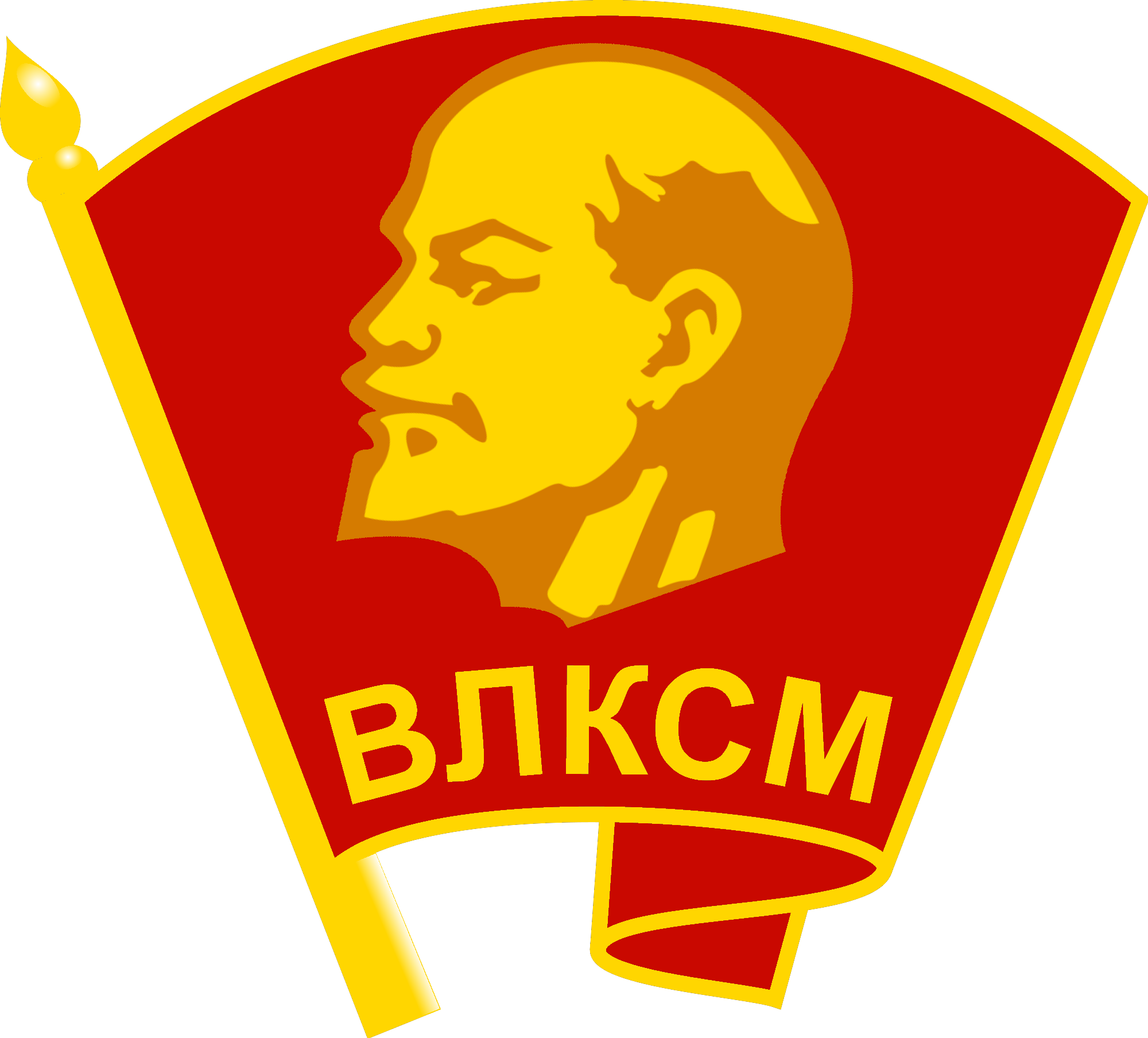|
Young Communist League Of Estonia
, colorcode = red , logo = , caption = Emblem , logo2 = , caption2 = Flag , founded = 1920 , dissolved = 1940 , headquarters = Tallinn, Estonia , ideology = , international = Communist Youth International , national = , mother party=Communist Party of Estonia , state party= , succeeded by=Leninist Young Communist League of Estonia , membership = , newspaper = Young Communist League of Estonia () was the youth wing of the Communist Party of Estonia during the interbellum period. Activities and organization EKNÜ was working in a clandestine manner. It published ''Noor Proletaarlane'' (1921) and ''Noor Tööline'' (1922–1923). There are other publications from the EKNÜ that were written by Kalju Tiro. EKNÜ was a section of the Communist Youth International. References Sources * Parming, TönuThe Electoral Achievements of the Communist Party, 1920-1940 ''Slavic Review The ''Slavic Review'' is a maj ... [...More Info...] [...Related Items...] OR: [Wikipedia] [Google] [Baidu] |
Tallinn
Tallinn () is the most populous and capital city of Estonia. Situated on a bay in north Estonia, on the shore of the Gulf of Finland of the Baltic Sea, Tallinn has a population of 437,811 (as of 2022) and administratively lies in the Harju ''maakond'' (county). Tallinn is the main financial, industrial, and cultural centre of Estonia. It is located northwest of the country's second largest city Tartu, however only south of Helsinki, Finland, also west of Saint Petersburg, Russia, north of Riga, Latvia, and east of Stockholm, Sweden. From the 13th century until the first half of the 20th century, Tallinn was known in most of the world by variants of its other historical name Reval. Tallinn received Lübeck city rights in 1248,, however the earliest evidence of human population in the area dates back nearly 5,000 years. The medieval indigenous population of what is now Tallinn and northern Estonia was one of the last " pagan" civilisations in Europe to adopt Christianit ... [...More Info...] [...Related Items...] OR: [Wikipedia] [Google] [Baidu] |
Komsomol
The All-Union Leninist Young Communist League (russian: link=no, Всесоюзный ленинский коммунистический союз молодёжи (ВЛКСМ), ), usually known as Komsomol (; russian: Комсомол, links=no ()), a syllabic abbreviation of the Russian ), was a political youth organization in the Soviet Union. It is sometimes described as the youth division of the Communist Party of the Soviet Union (CPSU), although it was officially independent and referred to as "the helper and the reserve of the CPSU". The Komsomol in its earliest form was established in urban areas in 1918. During the early years, it was a Russian organization, known as the Russian Young Communist League, or RKSM. During 1922, with the unification of the USSR, it was reformed into an all-union agency, the youth division of the All-Union Communist Party. It was the final stage of three youth organizations with members up to age 28, graduated at 14 from the Young Pioneer ... [...More Info...] [...Related Items...] OR: [Wikipedia] [Google] [Baidu] |
1940s Disestablishments In Estonia
Year 194 ( CXCIV) was a common year starting on Tuesday (link will display the full calendar) of the Julian calendar. At the time, it was known as the Year of the Consulship of Septimius and Septimius (or, less frequently, year 947 ''Ab urbe condita''). The denomination 194 for this year has been used since the early medieval period, when the Anno Domini calendar era became the prevalent method in Europe for naming years. Events By place Roman Empire * Emperor Septimius Severus and Decimus Clodius Septimius Albinus Caesar become Roman Consuls. * Battle of Issus: Septimius Severus marches with his army (12 legions) to Cilicia, and defeats Pescennius Niger, Roman governor of Syria. Pescennius retreats to Antioch, and is executed by Severus' troops. * Septimius Severus besieges Byzantium (194–196); the city walls suffer extensive damage. Asia * Battle of Yan Province: Warlords Cao Cao and Lü Bu fight for control over Yan Province; the battle lasts for over 100 days ... [...More Info...] [...Related Items...] OR: [Wikipedia] [Google] [Baidu] |
1920 Establishments In Estonia
Nineteen or 19 may refer to: * 19 (number), the natural number following 18 and preceding 20 * one of the years 19 BC, AD 19, 1919, 2019 Films * ''19'' (film), a 2001 Japanese film * ''Nineteen'' (film), a 1987 science fiction film Music * 19 (band), a Japanese pop music duo Albums * ''19'' (Adele album), 2008 * ''19'', a 2003 album by Alsou * ''19'', a 2006 album by Evan Yo * ''19'', a 2018 album by MHD * ''19'', one half of the double album ''63/19'' by Kool A.D. * ''Number Nineteen'', a 1971 album by American jazz pianist Mal Waldron * ''XIX'' (EP), a 2019 EP by 1the9 Songs * "19" (song), a 1985 song by British musician Paul Hardcastle. * "Nineteen", a song by Bad4Good from the 1992 album ''Refugee'' * "Nineteen", a song by Karma to Burn from the 2001 album ''Almost Heathen''. * "Nineteen" (song), a 2007 song by American singer Billy Ray Cyrus. * "Nineteen", a song by Tegan and Sara from the 2007 album '' The Con''. * "XIX" (song), a 2014 song by Slipknot. ... [...More Info...] [...Related Items...] OR: [Wikipedia] [Google] [Baidu] |
Political History Of Estonia
The political history of Estonia covers the political events and trends in the country throughout its historical period. Pre-independence Estonia, before 1918 Before becoming a modern nation state, Estonia was part of the Danish overseas colonies, Danish, Swedish Empire, Swedish, and Russian Empires. The Duchy of Estonia (1219–1346), Duchy of Estonia was a direct dominion of the King of Denmark from 1219 until 1346. After the Saint George's Night Uprising, the Danes sold the territory to the Teutonic Order and it became part of the State of the Teutonic Order, Ordensstaat. A second Duchy of Estonia (1561–1721), Duchy of Estonia was a Dominions of Sweden, dominion of the Swedish Empire from 1561 until 1721 during the time that most or all of Estonia under Swedish rule, Estonia was under Swedish rule. The land was eventually ceded to Russian Empire, Russia in the Treaty of Nystad, following Capitulation of Estonia and Livonia, its capitulation, Great Northern War plague outbreak, ... [...More Info...] [...Related Items...] OR: [Wikipedia] [Google] [Baidu] |
Youth Wings Of Political Parties In Estonia
Youth is the time of life when one is young. The word, youth, can also mean the time between childhood and adulthood ( maturity), but it can also refer to one's peak, in terms of health or the period of life known as being a young adult. Youth is also defined as "the appearance, freshness, vigor, spirit, etc., characteristic of one, who is young". Its definitions of a specific age range varies, as youth is not defined chronologically as a stage that can be tied to specific age ranges; nor can its end point be linked to specific activities, such as taking unpaid work, or having sexual relations. Youth is an experience that may shape an individual's level of dependency, which can be marked in various ways according to different cultural perspectives. Personal experience is marked by an individual's cultural norms or traditions, while a youth's level of dependency means the extent to which they still rely on their family emotionally and economically. Terminology and definitions ... [...More Info...] [...Related Items...] OR: [Wikipedia] [Google] [Baidu] |
Youth Wings Of Communist Parties
Youth is the time of life when one is young. The word, youth, can also mean the time between childhood and adulthood ( maturity), but it can also refer to one's peak, in terms of health or the period of life known as being a young adult. Youth is also defined as "the appearance, freshness, vigor, spirit, etc., characteristic of one, who is young". Its definitions of a specific age range varies, as youth is not defined chronologically as a stage that can be tied to specific age ranges; nor can its end point be linked to specific activities, such as taking unpaid work, or having sexual relations. Youth is an experience that may shape an individual's level of dependency, which can be marked in various ways according to different cultural perspectives. Personal experience is marked by an individual's cultural norms or traditions, while a youth's level of dependency means the extent to which they still rely on their family emotionally and economically. Terminology and definitio ... [...More Info...] [...Related Items...] OR: [Wikipedia] [Google] [Baidu] |
Slavic Review
The ''Slavic Review'' is a major peer-reviewed academic journal publishing scholarly studies, book and film reviews, and review essays in all disciplines concerned with Russia, Central Eurasia, and Eastern and Central Europe. The journal's title, though pointing to its roots in Slavic studies, does not fully encompass the range of disciplines represented or peoples and cultures examined. History The journal has been published quarterly under the current name since 1961 by the American Association for the Advancement of Slavic Studies (since 2010 named Association for Slavic, East European, and Eurasian Studies, continuing the series published by the same association since 1941 under different names: ''Slavonic Year-Book. American Series'' (1941), ''Slavonic and East European Review. American Series'' (1943–1944), ''American Slavic and East European Review'' (1945–1961). Under the current name, the subtitle of the journal has changed over the years to reflect changing termi ... [...More Info...] [...Related Items...] OR: [Wikipedia] [Google] [Baidu] |
Soviet Union
The Soviet Union,. officially the Union of Soviet Socialist Republics. (USSR),. was a transcontinental country that spanned much of Eurasia from 1922 to 1991. A flagship communist state, it was nominally a federal union of fifteen national republics; in practice, both its government and its economy were highly centralized until its final years. It was a one-party state governed by the Communist Party of the Soviet Union, with the city of Moscow serving as its capital as well as that of its largest and most populous republic: the Russian SFSR. Other major cities included Leningrad (Russian SFSR), Kiev (Ukrainian SSR), Minsk ( Byelorussian SSR), Tashkent (Uzbek SSR), Alma-Ata (Kazakh SSR), and Novosibirsk (Russian SFSR). It was the largest country in the world, covering over and spanning eleven time zones. The country's roots lay in the October Revolution of 1917, when the Bolsheviks, under the leadership of Vladimir Lenin, overthrew the Russian Provisional Government ... [...More Info...] [...Related Items...] OR: [Wikipedia] [Google] [Baidu] |
Estonia
Estonia, formally the Republic of Estonia, is a country by the Baltic Sea in Northern Europe. It is bordered to the north by the Gulf of Finland across from Finland, to the west by the sea across from Sweden, to the south by Latvia, and to the east by Lake Peipus and Russia. The territory of Estonia consists of the mainland, the larger islands of Saaremaa and Hiiumaa, and over 2,200 other islands and islets on the eastern coast of the Baltic Sea, covering a total area of . The capital city Tallinn and Tartu are the two largest urban areas of the country. The Estonian language is the autochthonous and the official language of Estonia; it is the first language of the majority of its population, as well as the world's second most spoken Finnic language. The land of what is now modern Estonia has been inhabited by '' Homo sapiens'' since at least 9,000 BC. The medieval indigenous population of Estonia was one of the last " pagan" civilisations in Europe to adopt Ch ... [...More Info...] [...Related Items...] OR: [Wikipedia] [Google] [Baidu] |
Interbellum
In the history of the 20th century, the interwar period lasted from 11 November 1918 to 1 September 1939 (20 years, 9 months, 21 days), the end of the First World War to the beginning of the Second World War. The interwar period was relatively short, yet featured many significant social, political, and economic changes throughout the world. Petroleum-based energy production and associated mechanisation led to the prosperous Roaring Twenties, a time of both social mobility and economic mobility for the middle class. Automobiles, electric lighting, radio, and more became common among populations in the developed world. The indulgences of the era subsequently were followed by the Great Depression, an unprecedented worldwide economic downturn that severely damaged many of the world's largest economies. Politically, the era coincided with the rise of communism, starting in Russia with the October Revolution and Russian Civil War, at the end of World War I, and ended with the rise ... [...More Info...] [...Related Items...] OR: [Wikipedia] [Google] [Baidu] |
Leninist Young Communist League Of Estonia
russian: Ленинский коммунистический союз молодежи Эстонии , colorcode = red , logo = , caption = Emblem , logo2 = , caption2 = Flag , founded = 1940 , dissolved = 1991 , headquarters = Tallinn, Estonian Soviet Socialist Republic , ideology = , international = World Federation of Democratic Youth , national = Komsomol (until 1989) , mother party=Communist Party of the Soviet Union , state party=Communist Party of Estonia , preceded by=Young Communist League of Estonia , membership = 162,202 (1980) , newspaper = ''Noorte Hääl'' The Leninist Young Communist League of Estonia ( et, Eestimaa Leninlik Kommunistlik Noorsooühing, ELKNÜ) was a political youth organization that served as the Estonian branch of Komsomol and as the official youth organ of the Estonian Communist Party (EKP). It existed from 1940 until the dissolution of the EKP in 1991. History Formed in the wa ... [...More Info...] [...Related Items...] OR: [Wikipedia] [Google] [Baidu] |





